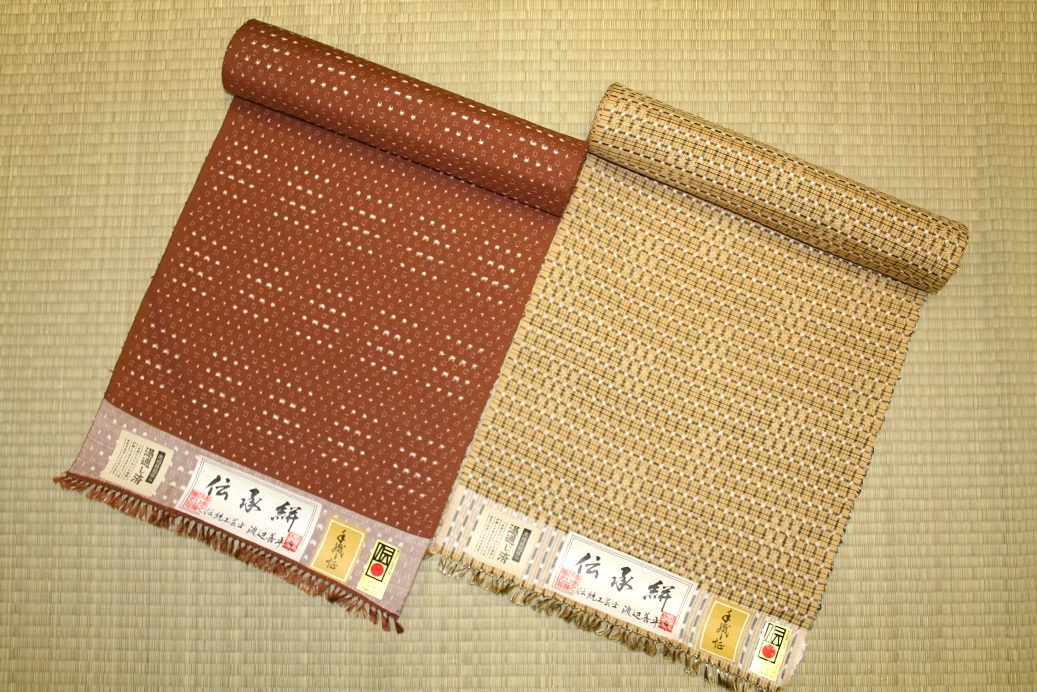十日町絣
Pronunciation: Tokamachi-kasuri
Production area: Tokamachi City and Tsunan Town, Niigata Prefecture
Tokamachi-kasuri is a silk textile that emerged in the mid-19th century, adapting the traditional techniques of Echigo Chijimi (hemp crepe weaving) into silk. By applying the methods of hemp weaving to silk, this craft developed its own identity. The delicate Kasuri (ikat) patterns, created through skillful use of both warp and weft ikat, combine with the luster of silk to produce a refined and subdued texture. It is cherished as a representative example of Sakizome (pre-dyed) textiles. In 1982, Tokamachi-kasuri was designated a Traditional Craft of Japan by the Ministry of Economy, Trade and Industry.
METI Designated Traditional Craft
Requirements for Tokamachi Kasuri [技術・技法]
① The textile must be woven as Kasuri using the following techniques:
1-1. It must be Sakizome (pre-dyed) plain weave.
1-2. Kasuri threads must be used for the weft or for both warp and weft.
1-3. The Kasuri patterns of warp and weft threads must be hand-matched during weaving.
② Dyeing of Kasuri threads must be carried out by hand, using either Kubiri (resist-tying) or Surikomi (rub-dyeing) techniques.
③ For Honshibo Kasuri (true crimped ikat), the ground weft must use Omeshi-ori (strongly twisted weft yarn). The yarn for Omeshi-ori must be twisted using a Haccho-shiki Nenshiki (Haccho-style twisting machine), then hand-treated with plant-based starches such as wheat paste or bracken starch.
The yarn must be raw silk, tama silk, handspun floss silk, or other silk fibers of equivalent quality.





















